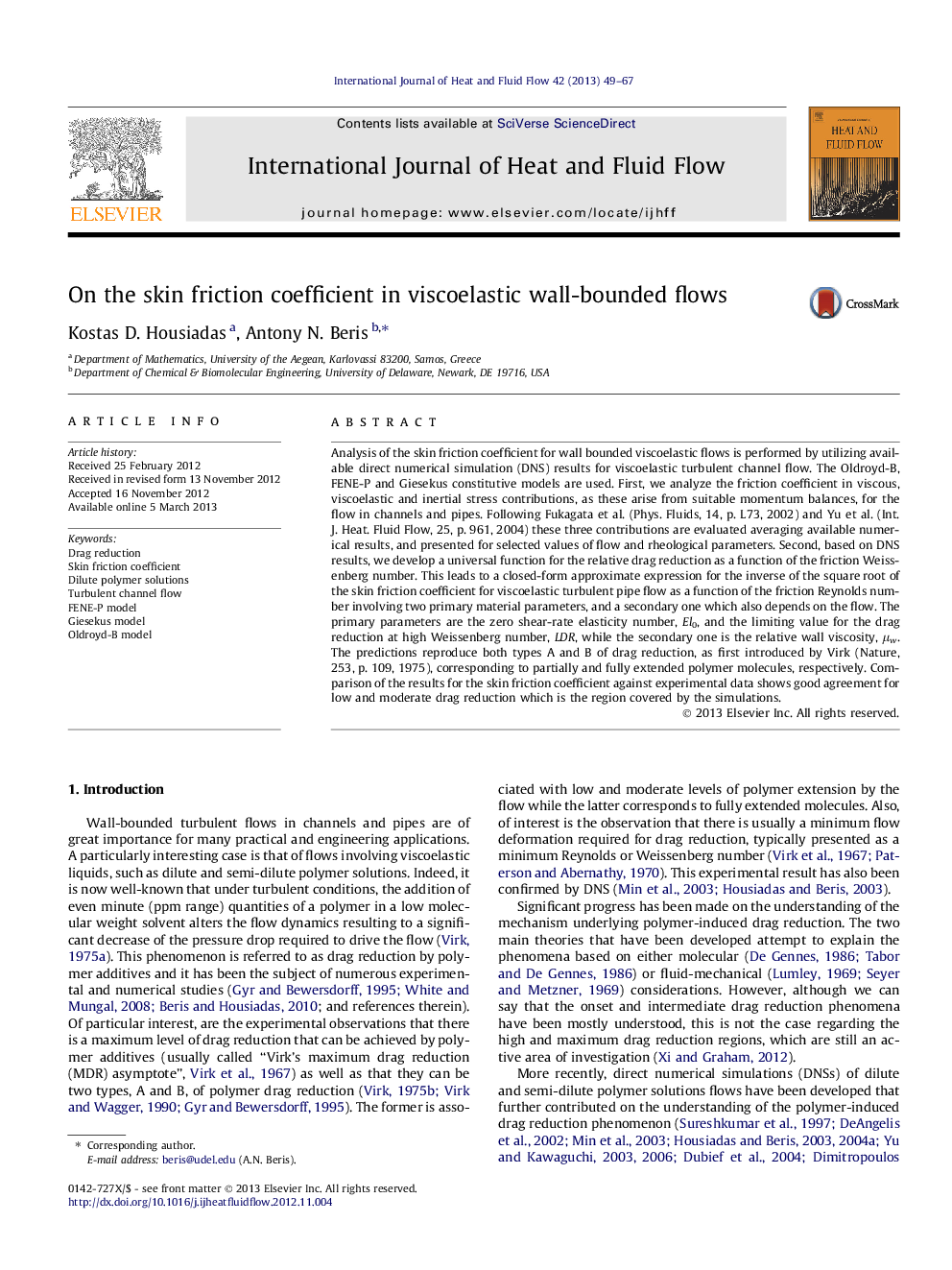| کد مقاله | کد نشریه | سال انتشار | مقاله انگلیسی | نسخه تمام متن |
|---|---|---|---|---|
| 655594 | 1457639 | 2013 | 19 صفحه PDF | دانلود رایگان |

Analysis of the skin friction coefficient for wall bounded viscoelastic flows is performed by utilizing available direct numerical simulation (DNS) results for viscoelastic turbulent channel flow. The Oldroyd-B, FENE-P and Giesekus constitutive models are used. First, we analyze the friction coefficient in viscous, viscoelastic and inertial stress contributions, as these arise from suitable momentum balances, for the flow in channels and pipes. Following Fukagata et al. (Phys. Fluids, 14, p. L73, 2002) and Yu et al. (Int. J. Heat. Fluid Flow, 25, p. 961, 2004) these three contributions are evaluated averaging available numerical results, and presented for selected values of flow and rheological parameters. Second, based on DNS results, we develop a universal function for the relative drag reduction as a function of the friction Weissenberg number. This leads to a closed-form approximate expression for the inverse of the square root of the skin friction coefficient for viscoelastic turbulent pipe flow as a function of the friction Reynolds number involving two primary material parameters, and a secondary one which also depends on the flow. The primary parameters are the zero shear-rate elasticity number, El0, and the limiting value for the drag reduction at high Weissenberg number, LDR, while the secondary one is the relative wall viscosity, μw. The predictions reproduce both types A and B of drag reduction, as first introduced by Virk (Nature, 253, p. 109, 1975), corresponding to partially and fully extended polymer molecules, respectively. Comparison of the results for the skin friction coefficient against experimental data shows good agreement for low and moderate drag reduction which is the region covered by the simulations.
► We decompose the skin friction coefficient to its individual contributions.
► The contributions are evaluated using simulation results in turbulent channel flow.
► We present a fitting curve for the drag reduction.
► A new formula for the skin friction coefficient is also developed.
► The results agree well with experimental data from the literature.
Journal: International Journal of Heat and Fluid Flow - Volume 42, August 2013, Pages 49–67